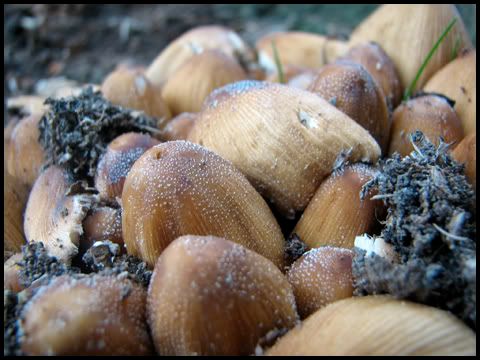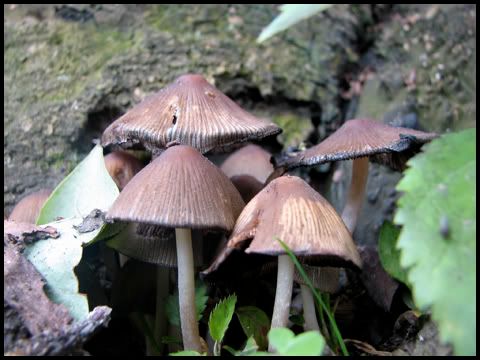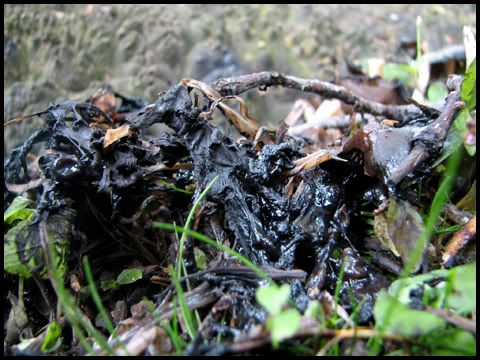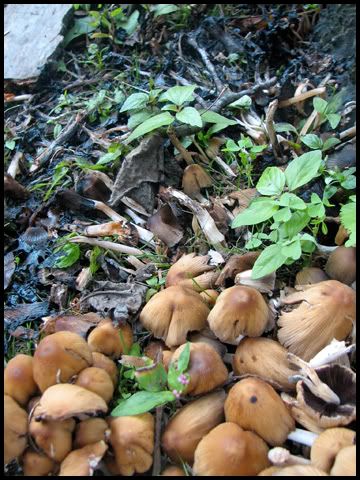Revisiting a favorite urban species

Coprinus micaceus, the mica cap, is one of the most urban and cosmopolitan of mushroom species. It was the first mushroom species I identified in a foreign city. It occurs virtually anywhere there are tree roots rotting in the ground. Why it thrives in urban areas is a mystery to me, though it seems that it must have accompanied Europeans on journeys around the world early on, probably as a stowaway in soil ballast.
I had the good fortune recently to photograph the mushrooms in several stages of development. Mushrooms are sometimes hard to identify because they change over time. The first thing you might notice about the photograph above is the shiny specks on the mushroom caps. This field marking is the origin of the mushroom's name, but it may not always be present. If the rain that encourages the fungus to produce mushrooms is profuse, the mica-like spots might be washed off the caps.

As mushrooms mature, they open up like umbrellas, to expose the spore bearing surface underneath. Mushrooms in the Coprinus genus then begin to self-digest (deliquesce is the word mycologists like). Starting at the edge, the mushroom tissue turns to liquid, and the spores evaporate into the air.

Eventually all that is left is the liquified remains of the mushroom caps, sometimes with the stalks poking up through the debris. Coprinus mushrooms are often collectively called "inky caps."

There were mushrooms in all stages of this process present. This species doesn't always deliquesce completely, making it more tempting to those who would collect it for food. It is said to be thin and watery, but there are usually so many of them that they can be collected in sufficient numbers to be worth it. I haven't tried eating this one myself. Its location at the base of urban trees makes it likely that it has absorbed a good amount of dog urine before collection.